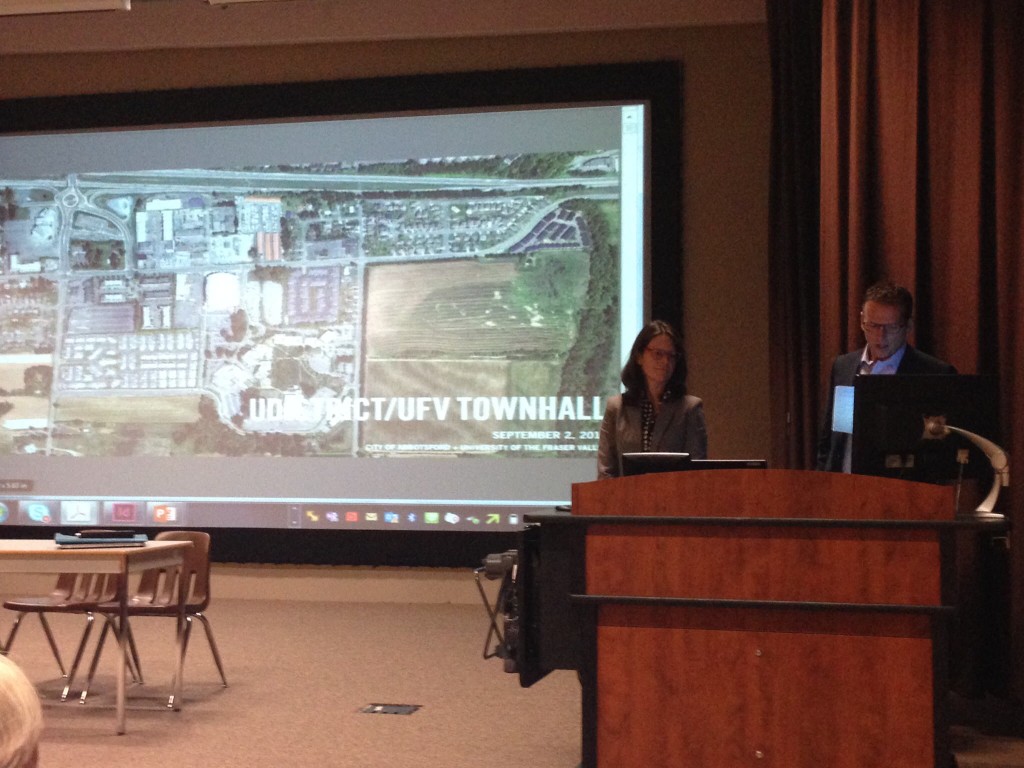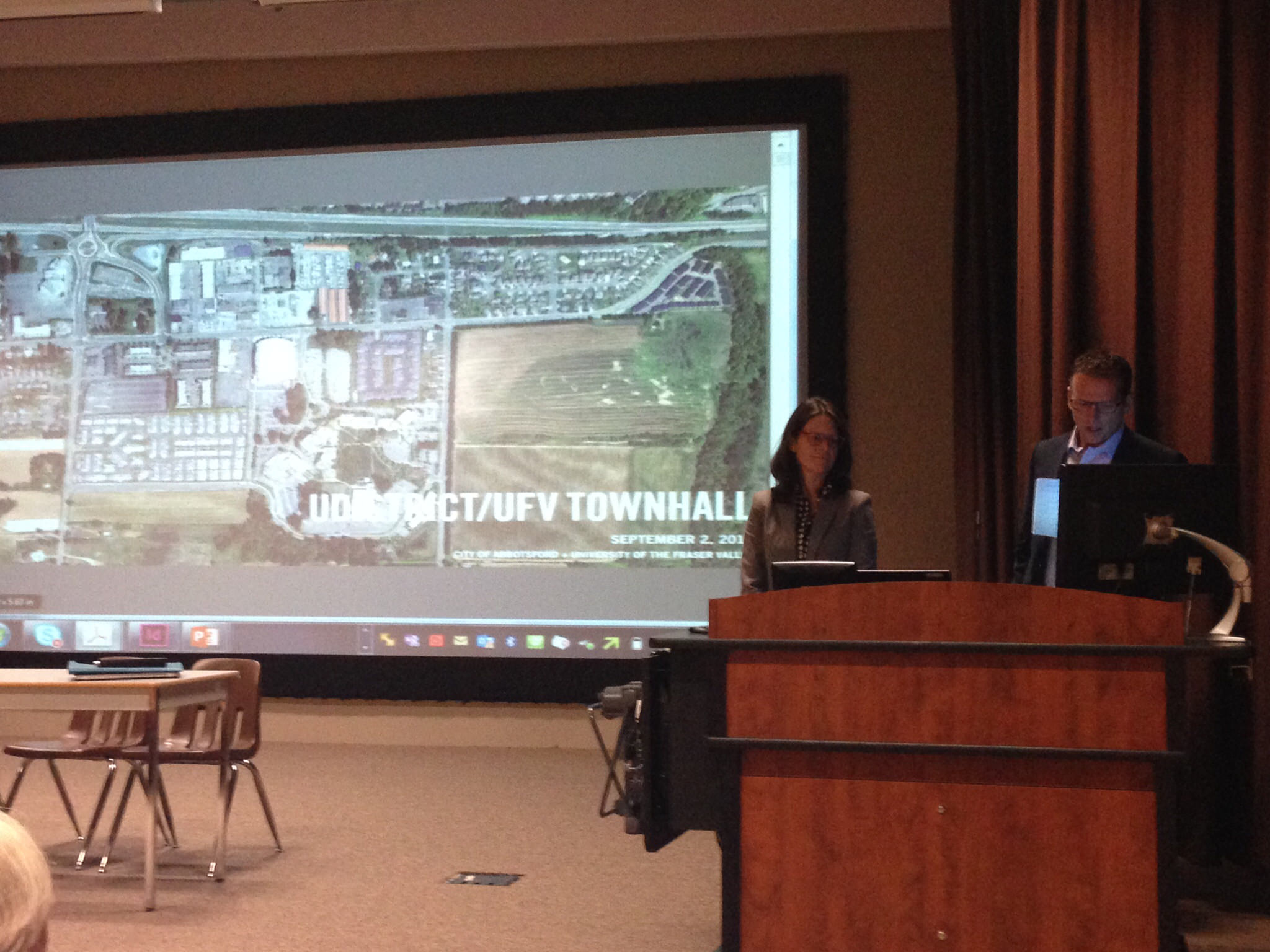By Megan Lambert (The Cascade) – Email

The seats in room B101 were mostly empty, but the discussion about the U-District plan to develop the King Road area from a remote industrial landscape into a livable hub for students continued well after the scheduled end time.
Approximately 30 people attended the townhall-style U-District meeting last Wednesday, September 2, where a guest speaker gave her presentation, and a Q&A period followed.
Campus planning director Brodie Bain, from the Seattle office of Perkins + Will architecture and design firm, gave a slideshow presentation on the trends in campus development. The presentation used photos of modern glass walls and brightly lit corridors, but there were no specific plans or concepts directly related to UFV or the U-District. Bain was hired to give workshops earlier in the day so UFV administration could get some ideas from her years of experience in campus planning.
She said the way of building universities is beginning to follow trends in education, including the focus on group work and student-led learning. Bain said that because of less public funding, the increased use of distance or online learning, the wider demographic of students pursuing post-secondary, and the changing perception of a university as an ivory tower, it’s important for a university to keep up with the direction of education with a flexible design.
“You absolutely can look at the implications of the physical environment,” she said. “It’s about facilitating the mission, goals, and activities of an institution that we’re creating the environment for.”
Bain then spoke about the redesign of classrooms, explaining that the trend is moving away from the traditional style of a professor at the front with students facing forward, and towards the use of all four walls.
VP academic Eric Davis took an opportunity to speak to this, saying the 20th century university model is of the professor instructing the student, but that the 21st century model is of the student asking questions and the professor facilitating learning beyond that.
“The 20th-century university was built around instruction by faculty in the classroom. The 21st-century university will be built around learning by students everywhere,” he said.
This aligns with Bain’s portfolio: classrooms are designed with tables and chairs that have group work in mind, are wired for the latest technology, and have sleek, minimalistic surfaces below eye-level. The themes in her presentation included open and transparent architecture with flexible and efficient use of space within those buildings. Bain also mentioned the use of large gathering spaces outside of classrooms for students to use individually or in teams.
This is the trend in other modern buildings, too; an example is the HighStreet Shopping Centre in Abbotsford that has floor-to-ceiling glass walls and simple furniture. However, as the building trends from decades past go in and out of style, Bain reinforced the merit of staying adaptable.
“You want to place a couple of more iconic uses and elements of the campus in certain locations, and then everything else should stay flexible. You just don’t know where the funding is going to come from, what the needs are going to be, and how the campus might grow,” she said.
After associate vice-president of institutional research and integrated planning Vladimir Dvoracek asked her opinion of what UFV’s focal point is, Bain responded that it seems to be the Abbotsford campus Green.
As the U-District takes shape, executive director of campus planning and resource development Craig Toews said that using UFV’s infrastructure in an attractive and effective way might have a positive impact on student retention.
“It’ll be a stimulating environment for creative learning and collaboration,” he said. “If we get this right, this could be a real game-changer for Abbotsford in terms of retaining young people and the talent that we’re currently losing to Vancouver.”
The U-District project planning is currently in its second phase, “Choices and Direction,” synthesizing data collected from research and previous public input. This phase will continue until December 2015.


